Inside the Oregon refuge seized by militiamen
- Published
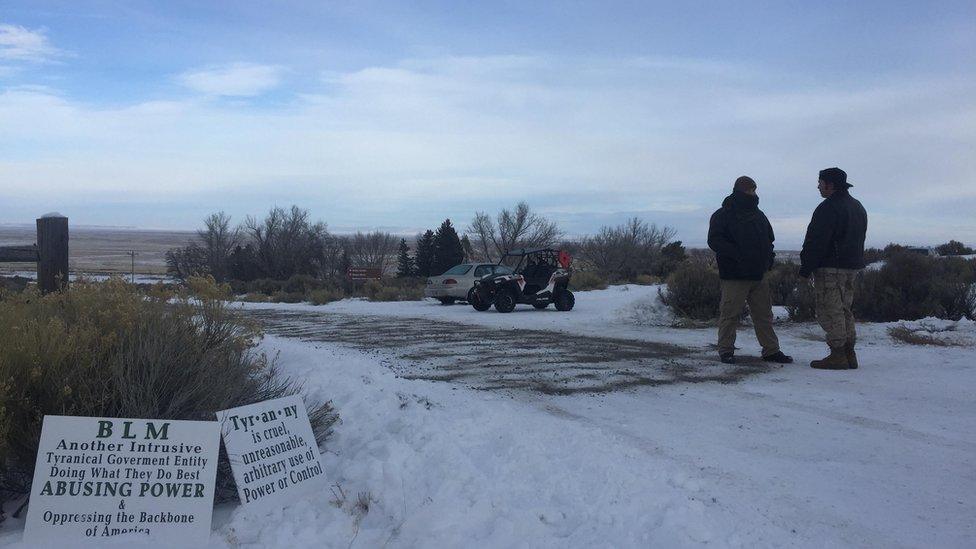
The latest clash between Washington and the west is playing out on a snowy desert plain in the wilds of Oregon.
When we arrived in darkness all was calm and quiet.
We were greeted courteously by men carrying copies of the US constitution, who told us they were unarmed.
They had draped the US flag over a sign at the entrance to the wildlife refuge and they offered us a cup of coffee.
The guards told us that the armed men inside were not taking visitors at present but would be happy to come out and meet the media face to face in the morning.
One of the men tried to give me a small US Fish and Wildlife Service sign from the building "as a souvenir".
"It's mine," he said, "I paid for it," making a reference to his taxes.
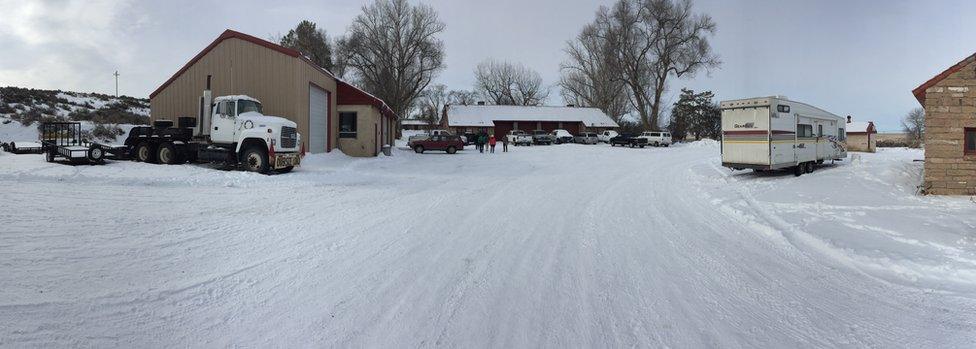
The media was allowed on to the seized site on Monday

Ammon Bundy leads the group
A short distance away, down a slope in the darkness, sat the Malheur National Wildlife Refuge itself, a collection of more than a dozen buildings which serves as the headquarters for a sanctuary established by President Theodore Roosevelt in 1908.
A spot popular with birdwatchers keen to catch a glimpse of a greater sandhill crane may seem an improbable symbol of oppression but the men here insist the federal government has overreached its authority and has no right to this land.
The refuge abuts property owned by the two men whose incarceration sparked this whole protest, Dwight Hammond and his son Steven.
Their lawyer told the BBC that the Hammonds, who have already served time in prison for setting fires which spread to public land, had travelled to California on Sunday to hand themselves in after federal prosecutors won an appeal that resulted in lengthier jail terms.
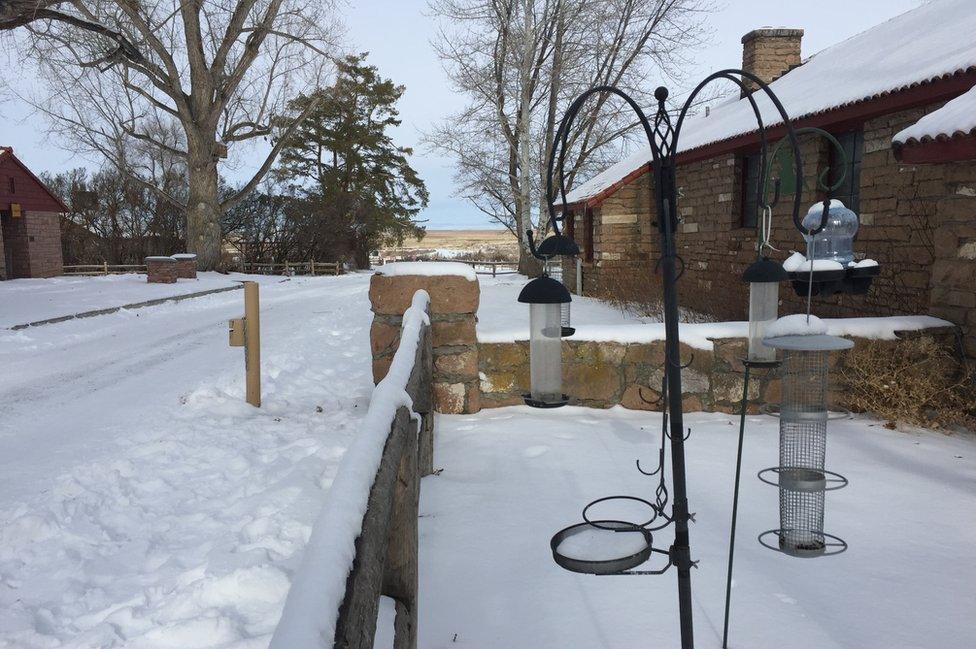
For its occupiers, the refuge is a symbol of oppression
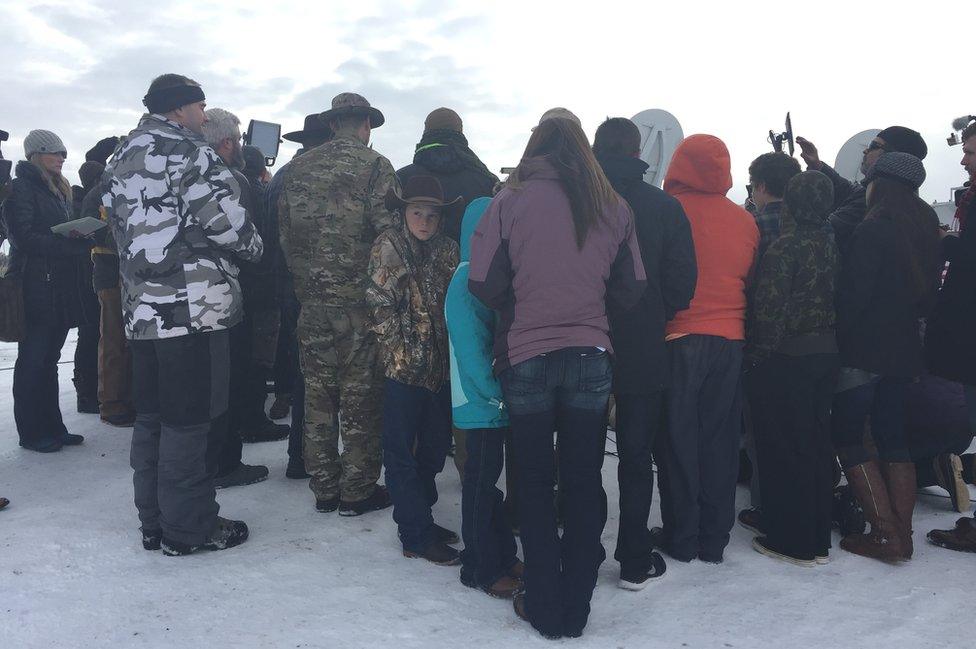
A boy attends a militia press conference with his family
Publicly they have distanced themselves from the action, taken by people who are not neighbours or locals.
But some people in the community around the town of Burns say while they do not approve of the methods, they are in tune with the sentiment.
Back at the bird reserve, the mood changed slightly as the day dawned, the birds started singing and the winter sun struggled to pierce the hazy clouds.
The media were now at the gate in force and the men there were more reluctant to talk.
"We need to stick to the narrative," one told us as he explained why we needed to wait for their leader Ammon Bundy.
Down a slight hill, we could now see the headquarters clearly, the red roofs of the sheds standing out against the snow.
Several dark-clad figures moved around in the complex.
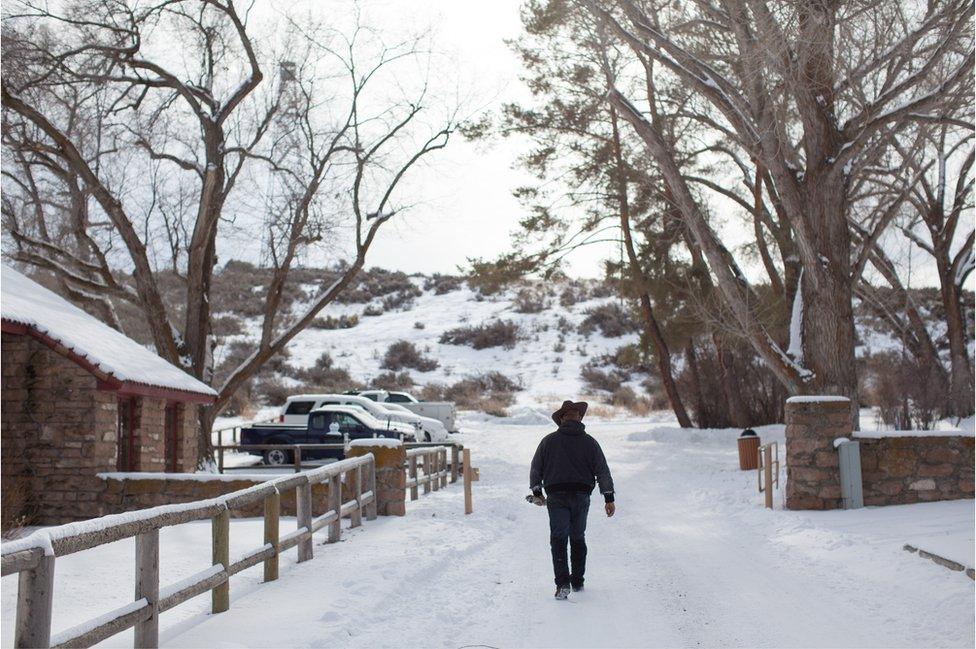
A member of the anti-government militia trudges through the snow
At the top of a metal observation tower two men surveyed the surroundings.
There was not much for them to see apart from satellite trucks, camera crews and a solitary, unexplained drone.
For miles around there was no sign at all of any law enforcement officers although the word in Burns, some 30 minutes away, is that the hotels are packed with FBI agents.
Critics of this occupation are putting pressure on the federal authorities to enforce the law and end it. They have accused the occupiers of this building of being domestic terrorists, using force to impose their will.
Those involved insist they are patriots and they claim they have the law on their side. The US constitution prohibits the federal government from owning this land, they say.
When Mr Bundy emerged to speak to the media he refused to tell me how many people were inside the bird sanctuary or how many were armed but, after the news conference, camera crews were given a limited tour of the site.
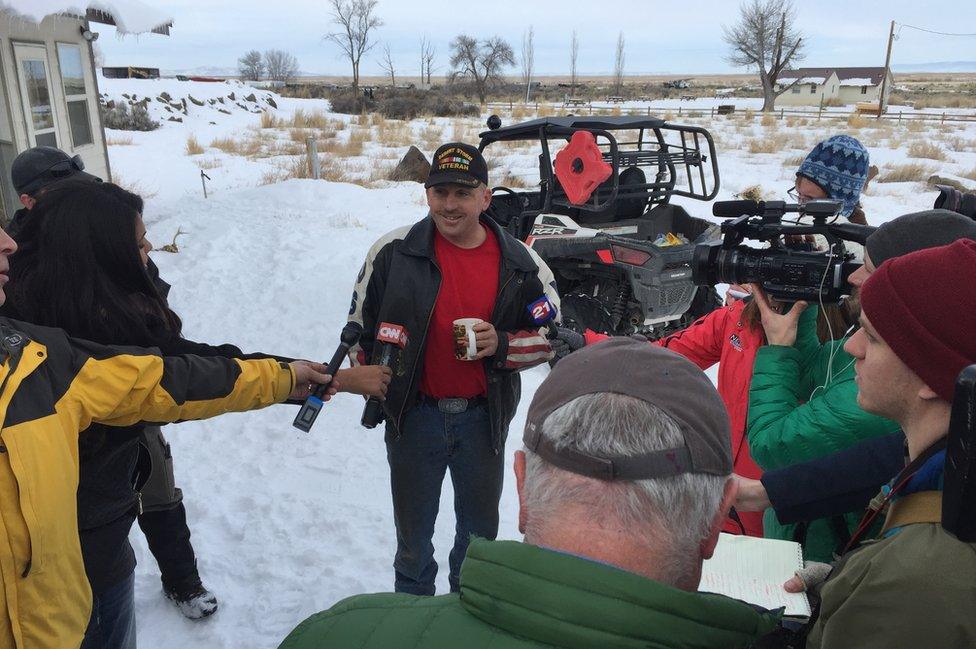
One of the protesters, Duane Ehmer, speaks to the media
Several children also came along although the militia men said the youngsters were visitors who were not staying on the site.
We were told we would not be shown anything relating to "operational security" or anything that would "put lives at risk" and, indeed, we were kept away from any weapons on the site.
A number of US government vehicles sat in the car park, covered in snow.
We were not allowed into most of the buildings and saw no more than a dozen men and one woman inside.
We were taken into a building where one of the protestors said he had been sleeping. It appeared to be a gym for the federal employees who usually manage this land.
There were cans of chicken noodle soup, oranges, apples and other food.
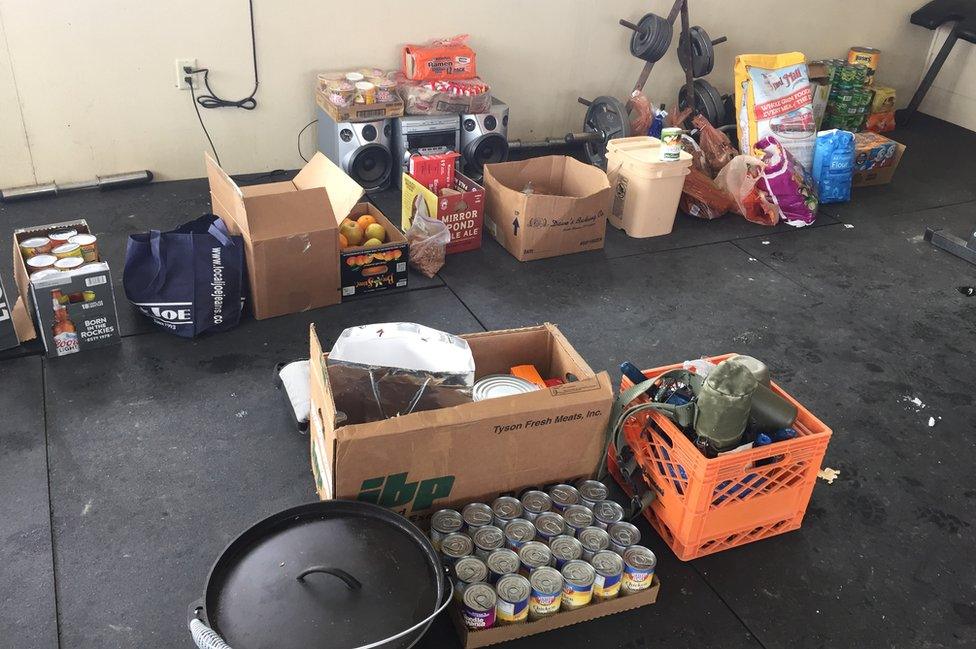
The protesters brought food with them
Through a glass window we could see a man and a woman cooking food in a kitchen. The site appeared to be in good condition.
Not all of the men here were keen to talk but those who were have urged supporters to take up arms and join them to assert the rights of ranchers in the American west, rights which they say have been trampled by a federal government over-reaching its authority.
They say they are prepared to stay here for years to make that point and, so far, there is no sign at all of them leaving or being forced from this land.
But with the absence of law enforcement this is not a stand-off. Not yet anyway.
- Published27 January 2016
